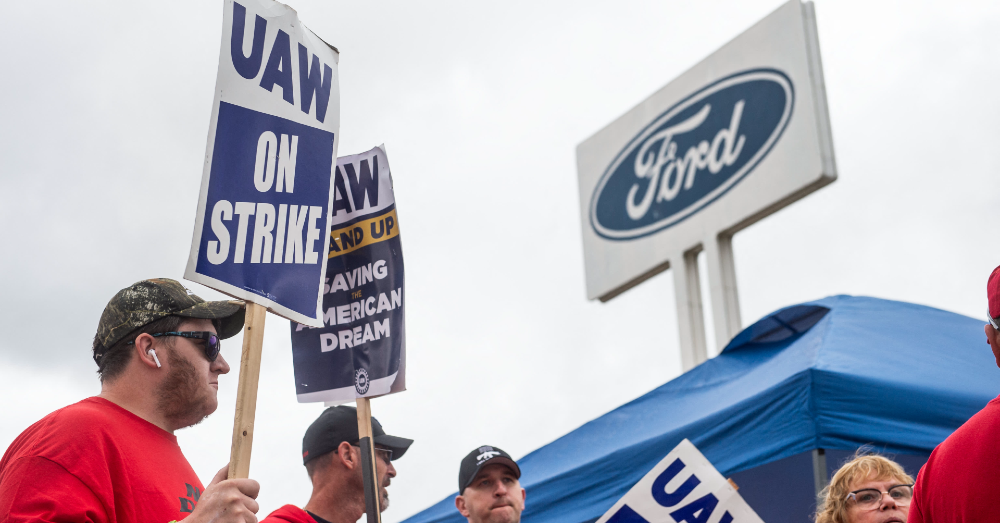Ford CEO Jim Farley recently announced the Detroit giant will be thinking carefully regarding where it builds future vehicles.
Last fall’s United Auto Workers strike affected Ford, and each Ford dealership alike. Up until last fall, the last worker strike to affect the Ford Motor Company (NYSE: F) occurred in 1978, due to workers refusing a meager five percent pay increase.
The location for this latest strike was Ford’s truck plant located in Louisville, KY. When asked about the Louisville plant and its future, CEO Farley lamented, “We have to think carefully about our [manufacturing] footprint.”
Unlike Ford’s previously bankrupt competition, who decided to outsource their truck production to Mexico, it was decided that all FoMoCo full-size pickups were to be built in the United States. Farley commented on the decision to keep truck production in the US, stating that Ford regarded the increased expense as “the right kind of cost.”
Commenting further at a recently-held press conference, Jim Farley explained, “Our reliance on the UAW turned out to be we were the first truck plant to be shut down. Really, our relationship has changed. It’s been a watershed moment for the company. Does this have a business impact? Yes.”
Union President Shawn Fain commented on the recent strike, saying “Maybe Ford doesn’t need to move factories to find the cheapest labor on Earth,” he said. “Maybe it needs to recommit to American workers and find a CEO who’s interested in the future of this country’s auto industry.”
The strike even made waves at the Presidential level, with White House Press Secretary Karine Jean-Pierre commenting on Jim Farley’s remarks, stating that President Joe Biden believes in making goods and creating jobs for the United States and its citizens. “We’re going to do everything we can to make sure that continues,” she said.
According to Jean-Pierre, President Biden believes that workers have the right to collective bargaining to secure better pay and supplemental benefits. “That is something that the president is always going to speak for and is going to stand up for,” she said.
After the six-week strike ended, senior and top-scale factory workers won a 33% pay increase, pushing the top wage up to $42 an hour. However, to pay for the 33% factory worker pay raise, Farley states that each new vehicle would cost about $900 more per unit. According to Farley, that, on top of a $7 billion cost disadvantage compared to competitors, will require cost-cutting measures and company-wide structural changes.
Ford’s EV programs are also hurting, with the Ford Model e netting a nearly $5 billion loss last year. The Detroit giant reported a net income of $4.3 billion, largely thanks to its Pro commercial vehicle division and Ford Blue, the internal combustion vehicle division.
Ford has been dealt a blow this past year, but with EVs growing in popularity and the strike settles, hopes to see brighter horizons ahead.
This post may contain affiliate links. Meaning a commission is given should you decide to make a purchase through these links, at no cost to you. All products shown are researched and tested to give an accurate review for you.




